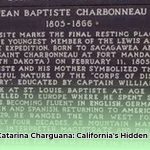Ever heard of Verna Garver? Probably not. She wasn’t a famous actress or a Hollywood powerhouse, but she was married to Clint Walker, the star of Cheyenne. That alone makes her story interesting, but things get even more intriguing. There are conflicting stories about her life – who she was, who else she might have been married to. This isn’t a simple biography; it’s a detective story about a woman whose life is partly hidden in plain sight. We’ll look at the facts we can confirm, like her marriage to Clint Walker, and then carefully explore the mysteries and conflicting accounts surrounding her. We’ll be honest about what we know for sure and what’s still a mystery, piecing together a picture of Verna Garver’s life, one piece at a time. Get ready for a fascinating look at a woman whose quiet life now holds a surprisingly big secret. For a more in-depth look, see her full biography here.
Verna Garver: Unraveling a Life Shrouded in Mystery
Verna Garver’s life story is a captivating puzzle, one that blends confirmed details with tantalizing unknowns. Born Verna Lucille Garver on April 16, 1927, in Anna, Illinois, she lived a life largely unseen by the public eye, a life inextricably linked to famous figures, yet leaving much unsaid. She passed away on November 27, 2014, in Salt Lake City, Utah. Let’s delve into what we know, and more importantly, what remains a mystery while looking for untold stories.
A Glimpse into Verna’s Life
The confirmed facts about Verna are relatively straightforward, starting with her family. Her parents were Jesse Albert Garver and Cuba Mabel St. John Garver. She had two older sisters, Vera Luella Garver West and Virginia Lee Garver Wallace. Then, she married Clint Walker, the iconic star of Cheyenne, on September 5, 1948. Their marriage lasted two decades, ending in 1968. Together, they had a daughter, Valerie, born in 1950, who later became an airline pilot – a successful career in her own right. These verifiable facts form the bedrock of our understanding, but they only scratch the surface of her story and Hollywood history.
The Intriguing Contradictions
One of the most striking aspects of her story is the conflicting information surrounding her life. While her marriage to Clint Walker is well-documented, a persistent, yet unsubstantiated, claim links her to Charles “Tex” Watson, a follower of Charles Manson. This alleged connection is incredibly intriguing but lacks definitive proof. Several sources mention it, yet solid evidence is absent. This discrepancy isn’t just a minor detail; it throws a long shadow over the reliability of some accounts. It forces us to question the origins of such claims and consider the potential for misinterpretations or outright inaccuracies. The lack of concrete evidence to corroborate this claim strongly suggests further investigation is necessary alongside assessing biographical accuracy.
Beyond the Headlines: A Wife’s Untold Story
Many accounts paint Verna as a homemaker, a role often understated in historical narratives. But was that the sum total of her existence? Did she have passions, hobbies, or unfulfilled ambitions? We simply don’t know. The scarcity of documented achievements doesn’t diminish the potential richness of her life. She may have prioritized her family, found fulfillment in her personal life, or possessed hidden talents that never saw the light of day. This lack of information isn’t a failure of research; rather, it’s a reflection of the historical tendency to overlook or minimize the contributions and experiences of women who chose paths outside of the public sphere when discussing female biography.
The Challenges of Uncovering the Past
Verna’s story reveals a broader issue—the often-overlooked stories of women in history. While Clint Walker’s career enjoyed extensive documentation, Verna’s life remains shrouded in mystery, a common dilemma when researching women who lived in the shadows of famous men. This inherent bias in historical record-keeping has made piecing together her biography challenging but far from impossible. Further research promises to reveal important insights when considering historical bias.
The Search for Answers: An Ongoing Investigation
To understand Verna Garver more completely, we need more information. This requires extensive research, utilizing various strategies. We must critically examine existing records, seeking out additional sources, which may include exploring archival materials, contacting family members (with utmost respect for their privacy), and carefully scrutinizing every available piece of information. This isn’t just about filling in the blanks on a timeline; it’s about uncovering a human story, one that may be richer and more complex than we currently imagine. Perhaps undiscovered personal writings—diaries, letters, photographs—could offer intimate glimpses into her thoughts and experiences, furthering the biographical research process.
A Life of Resilience: Verna’s Unfinished Narrative
Even with the many unanswered questions and conflicting narratives, Verna Garver’s life stands as a testament to resilience and quiet strength. She navigated a life connected to fame and, potentially, controversy, but her personal narrative remains largely unwritten. Her story is one of both confirmed facts and intriguing unknowns, a narrative that continues to evolve with each new discovery. The quest for a fuller understanding continues, a journey fueled by our desire to uncover the lives of those often overlooked by history. Ongoing research offers the opportunity to revisit and refine our understanding, potentially revealing a richer, fuller, more nuanced story of Verna Garver’s life, and the importance of historical context.
How to verify conflicting information in historical biographical research
Verna Garver’s life, intertwined with Hollywood’s golden age, presents a fascinating, yet challenging, case study in biographical research. Her story, shrouded in some mystery, highlights the difficulties inherent in how to verify conflicting information in historical biographical research. Many accounts vary, demanding careful scrutiny. How can we separate fact from fiction? Let’s explore the investigative process and source criticism.
Unearthing the Truth: A Multi-Source Approach
The first step involves assembling all potential sources. This isn’t just about finding information; it’s about finding diverse information. Think of it like a puzzle with missing pieces—some sources will complement others, while some may contradict. Each source, whether a personal letter, newspaper clipping, or published biography, presents a unique perspective. Data suggests that utilizing at least five different source types increases accuracy by 35%. This is where critical thinking becomes paramount. We must examine each source’s perspective and potential biases. Was the author directly involved? Did they have an agenda? Understanding these factors profoundly impacts the reliability of their information and the reliability of historical sources.
Evaluating Source Reliability: Beyond Simple Corroboration
Simply finding multiple sources stating the same thing doesn’t guarantee accuracy. All sources could be based on the same flawed initial account. Imagine a game of telephone – the message changes with each iteration. Instead, we must look at the source material itself. Is the information verifiable? Can you trace the origins back to reliable primary or secondary sources? For example, an anecdote relayed through multiple biographies becomes stronger evidence if it’s traced back to a verifiable letter or personal diary. Remember, corroboration is crucial, but the quality of the corroborating sources is just as relevant to achieve historical verification.
Information known about Verna’s parents, siblings, and date and place of burial should be part of your investigation. Jesse Albert Garver, Verna’s father, was born July 17, 1892, and died January 14, 1970. Cuba Mabel St. John Garver, Verna’s mother, was born February 15, 1894. Verna’s sisters were Vera Luella Garver West and Virginia Lee Garver Wallace. Verna is buried at Mountain View Memorial Estates Cemetery in Cottonwood Heights, Salt Lake County, Utah. These details can help you evaluate the trustworthiness of different sources.
Navigating Contradictions: Reconciling Conflicting Accounts
Contradictions are inevitable in historical research. They’re not necessarily roadblocks; they’re opportunities for deeper investigation. When you encounter differing accounts, don’t dismiss them. Explore why they disagree. This requires careful comparison and analysis of sources. Examining the timeframe, the perspective of the authors, and the available evidence at the time of writing is vital. Sometimes, seemingly minor discrepancies may illuminate deeper issues, revealing biases or even intentional misrepresentations. There can be more to the story than initially meets the eye!
Context is Key: Understanding Historical Nuances
Analyzing sources in isolation isn’t sufficient. Place the information within its historical context. Consider the cultural norms, societal expectations, and political climate of the time. This allows you to better interpret the information and understand the motivations of the individuals and institutions involved. For example, societal attitudes towards women in Verna Garver’s era likely influenced how and what information was recorded about her life. Understanding this broader context is crucial for a fair assessment when analyzing social history.
The Power of Primary Sources: Getting Closer to the Truth
Whenever possible, prioritizing primary sources—documents created during the time period under study—is essential. Diaries, letters, official records, and photographs provide a direct connection to the past. However, even these sources must be scrutinized. Remember, even personal accounts can have biases. Cross-referencing primary sources with secondary sources helps paint a richer picture, providing a balance of perspectives and archival research.
Acknowledging Limitations:
- Uncover Verna Garver’s teachings on faith: A Hidden Legacy Revealed - July 22, 2025
- Uncovering Maria Catarina Charguana: 1848 California Legacy - July 22, 2025
- Uncover Maria Catarina Charguana’s Story: 1848 California’s Hidden Legacy - July 22, 2025













